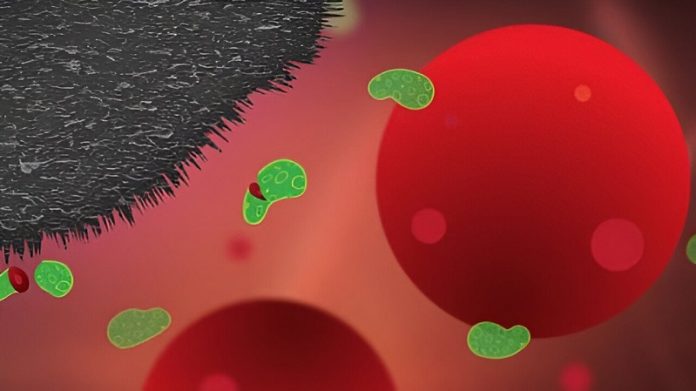
Scientists have made a breakthrough in using graphene, a super-thin and strong material, to fight antibiotic-resistant bacteria.
This new development could have a significant impact on healthcare by reducing infections caused by medical devices like catheters and implants.
The innovative solution was discovered by researchers at Chalmers University of Technology in Sweden, who used a simple technology found in fridge magnets to control graphene’s powerful bacteria-killing properties.
Graphene is a single layer of carbon atoms arranged in a two-dimensional sheet, making it extremely thin and strong.
It has shown promise in killing bacteria, but until now, scientists have struggled to control how graphene interacts with surfaces, limiting its practical use in healthcare.
The team at Chalmers has solved this problem by developing an ultra-thin surface coated with graphene that can kill 99.99% of bacteria on contact.
This coating could be applied to medical devices to prevent infections, which are a major concern in hospitals worldwide.
Infections related to medical devices, such as catheters, hip replacements, and dental implants, are a significant problem.
Bacteria can enter the body through these devices, leading to serious infections that are difficult to treat and contribute to the growing issue of antibiotic resistance.
Antibiotic resistance occurs when bacteria evolve to survive the drugs meant to kill them, making infections harder to treat.
The researchers at Chalmers have been working on how to use graphene to address this problem. They discovered that vertically standing graphene flakes, which look like tiny, sharp spikes, can prevent bacteria from attaching to surfaces.
When bacteria come into contact with these spikes, they are cut apart and killed. This method has a significant advantage over chemical treatments like antibiotics because it doesn’t contribute to antibiotic resistance.
However, the challenge has been in controlling the direction and orientation of the graphene flakes to ensure they work effectively on different surfaces. Previously, scientists could only control the graphene in one direction, limiting its use.
But now, the team at Chalmers has developed a new technique that allows them to control the orientation of graphene flakes in multiple directions, making it possible to apply the coating to various shapes and surfaces used in medical devices.
The key to this breakthrough is a method called the “Halbach array,” which involves arranging magnets in a circular pattern.
This setup creates a strong, uniform magnetic field that directs the orientation of the graphene flakes in a specific direction.
The technology is similar to the way magnets are arranged in a fridge, but with much more precision. By using this method, the researchers were able to achieve a highly effective antibacterial surface, killing 99.99% of bacteria that come into contact with it.
This new technology has the potential to be a game-changer in healthcare, helping to reduce infections and combat antibiotic resistance.
But the benefits of this graphene alignment method don’t stop there. The technique could also be used in other fields, such as improving batteries, sensors, and even creating durable, water-resistant packaging materials.
The researchers at Chalmers are excited about the future possibilities of their discovery. “This method opens up new horizons in material design,” said Professor Roland Kádár, one of the leading researchers on the project.
The team hopes that their graphene-coated surfaces will soon be introduced in healthcare settings, making medical devices safer and reducing the risk of infections for patients worldwide.
If you care about inflammation, please read studies about turmeric: nature’s golden answer to inflammation, and what to eat to reduce chronic Inflammation.
For more health information, please see recent studies about how a plant-based diet could help ease inflammation ,and Vitamin D deficiency linked to increased inflammation.



